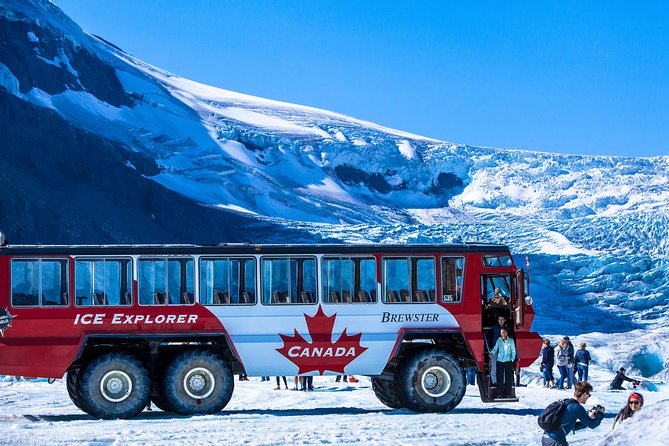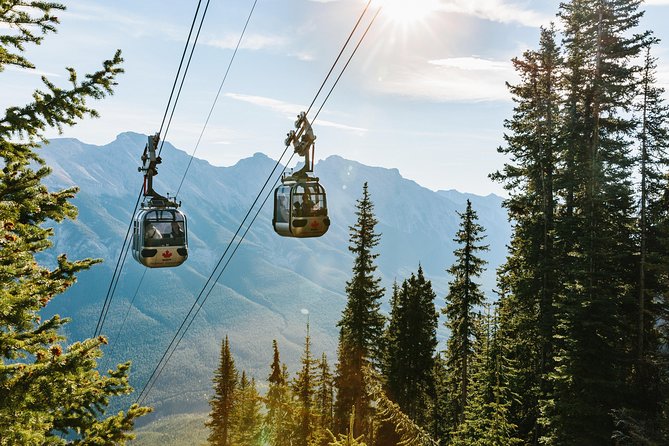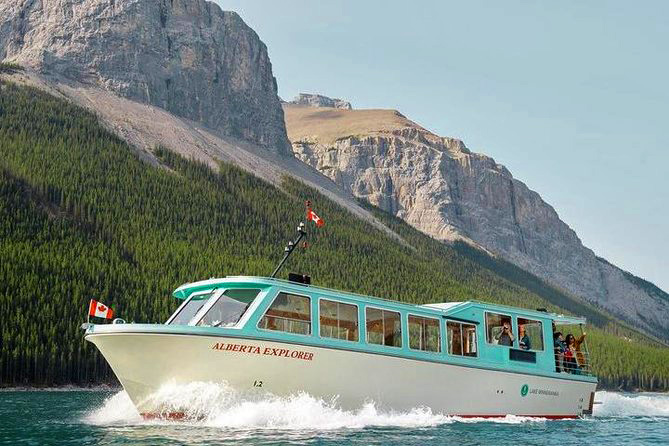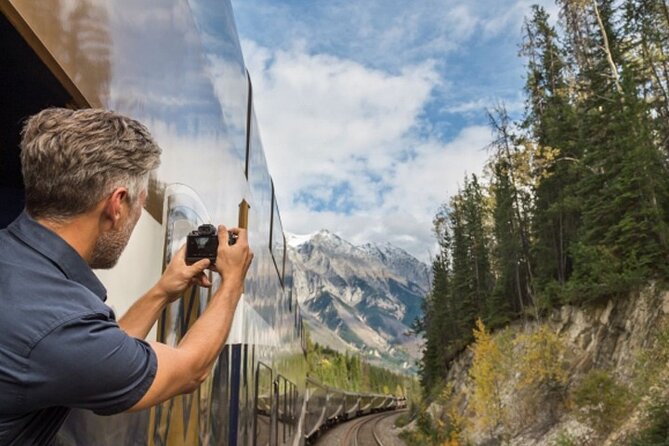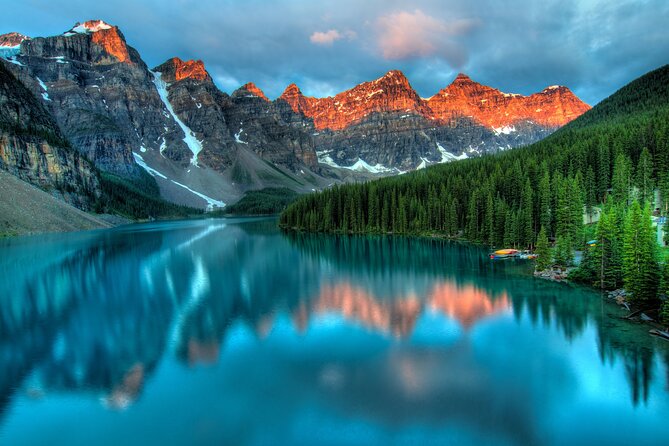Town of Banff
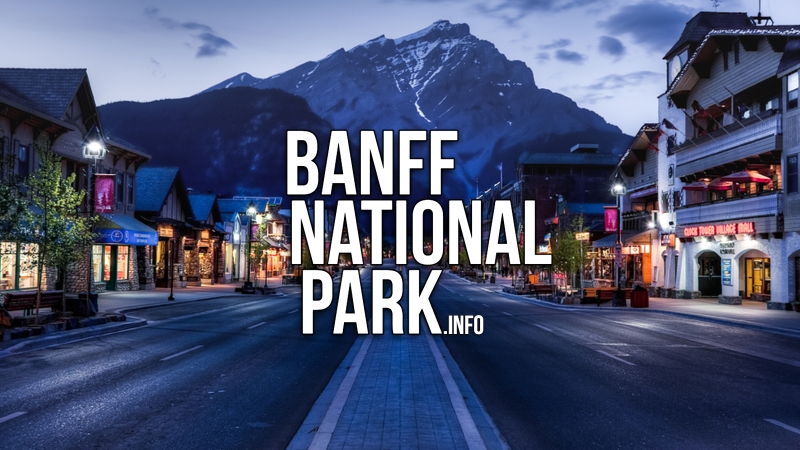
Banff is a charming and picturesque town located in the heart of Banff National Park, in the province of Alberta, Canada. Nestled among the majestic peaks of the Rocky Mountains, Banff is not only a gateway to outdoor adventures but also a vibrant cultural hub.
Town of Banff's Geography and Climate
Banff is situated at an elevation of around 1,383 meters (4,537 feet), making it the highest town in Canada. The surrounding landscape is characterized by rugged mountains, dense coniferous forests, and stunningly clear glacial lakes. The climate in Banff is subarctic, which means it has short, cool summers and long, snowy winters. This climate makes it an ideal location for winter sports and summer hiking.
Tourism and Attractions in the Town of Banff
Tourism is the heartbeat of Banff, drawing millions of visitors each year. The town itself offers a cozy, alpine village feel, with quaint streets lined with boutiques, restaurants, and art galleries. The Banff Centre for Arts and Creativity is a key cultural institution, offering a variety of performances, events, and workshops year-round.
Major attractions include the Banff Gondola, which provides a panoramic view of the surrounding mountains and valleys, and the famous Banff Springs Hotel, known for its stunning architecture and history. Just outside the town, Lake Louise and Moraine Lake are iconic destinations, renowned for their vivid turquoise waters and breathtaking mountain backdrops.
Outdoor Activities in Banff
Banff serves as a perfect base for a plethora of outdoor activities. In winter, skiing and snowboarding are popular at nearby resorts like Sunshine Village and Lake Louise. The colder months also offer opportunities for ice skating, snowshoeing, and ice climbing. Summer activities include hiking, mountain biking, and canoeing. The extensive network of trails offers something for every level of outdoor enthusiast, from gentle walks along the Bow River to challenging hikes like the ascent of Sulphur Mountain.
Town of Banff Conservation and Wildlife
As part of a national park, Banff is heavily involved in conservation efforts to protect its unique ecosystem and wildlife. The area is home to a variety of wildlife, including elk, deer, bears, and numerous bird species, making it a fantastic location for wildlife watching. However, with its popularity, the town also faces challenges related to environmental sustainability and managing human-wildlife interactions.
Access and Transportation in Banff
Banff is easily accessible via the Trans-Canada Highway and is about an hour and a half drive west of Calgary. The town is pedestrian-friendly and also offers public transportation options, including buses that facilitate access to various points of interest both in and around the town.
Town of Banff History
The history of Banff, Alberta, is deeply intertwined with the broader history of the Canadian Rockies and the development of Canada's national park system. Here are some of the key historical developments regarding the Town of Banff:
Indigenous Presence in Banff
Before European settlement, the area around Banff was inhabited by Indigenous peoples, including the Stoney Nakoda, Blackfoot, and Tsuut'ina nations. These groups used the region for its abundant hunting and fishing resources, and it was considered a sacred healing site due to the thermal mineral springs.
European Exploration and Settlement
The European history of Banff began in the late 19th century. In 1883, three Canadian Pacific Railway workers stumbled upon natural hot springs on Sulphur Mountain. This discovery sparked interest in the area's potential as a tourist destination. Recognizing the opportunity to attract visitors and promote the use of the railway, the Canadian Pacific Railway quickly lobbied the government to protect the area.
Establishment of Banff National Park
In 1885, the Canadian government established a small, 26-square-kilometer hot springs reserve around the Cave and Basin site. This reserve was expanded significantly in the following years and was designated as Canada's first national park, originally known as Rocky Mountains Park. The park was intended to draw tourists, much like Yellowstone National Park in the United States.
Development of the Town of Banff and Tourism
To promote tourism, the Canadian Pacific Railway built the luxurious Banff Springs Hotel, which opened in 1888. The hotel and the stunning natural scenery attracted tourists, leading to the growth of the town of Banff, which was established in 1883. Over time, additional facilities and infrastructure were developed to support the increasing number of visitors.
Impact of World War and the Great Depression on the Town of Banff
The early 20th century saw continued growth, although the pace slowed during World War I and the Great Depression. During these times, the park and town still served as a refuge and a source of natural beauty for those who could afford to visit.
Post-War Boom and Environmental Considerations
After World War II, tourism in Banff surged again with improvements in transportation and more middle-class families traveling. In response to the environmental impact of increased visitation, the government began implementing stricter conservation measures and eventually renamed the park to Banff National Park in 1930, setting the stage for modern environmental management practices.
The Town of Banff in Modern Times
In recent decades, Banff has faced challenges related to balancing tourism with environmental preservation. The town and park have implemented various sustainability initiatives to manage these issues. Despite these challenges, Banff remains one of Canada's most popular tourist destinations, known worldwide for its natural beauty and outdoor recreation opportunities.
Banff embodies a blend of natural beauty, cultural richness, and adventurous activities, making it a unique and captivating destination for both relaxation and adventure seekers. The Town of Banff is a vibrant testament to Canada's commitment to natural preservation, indigenous history, and sustainable tourism, attracting millions of visitors from around the globe each year.
Banff National Park Home

